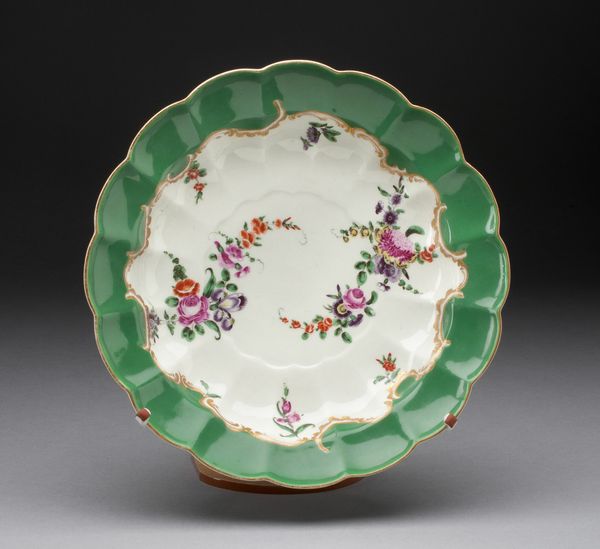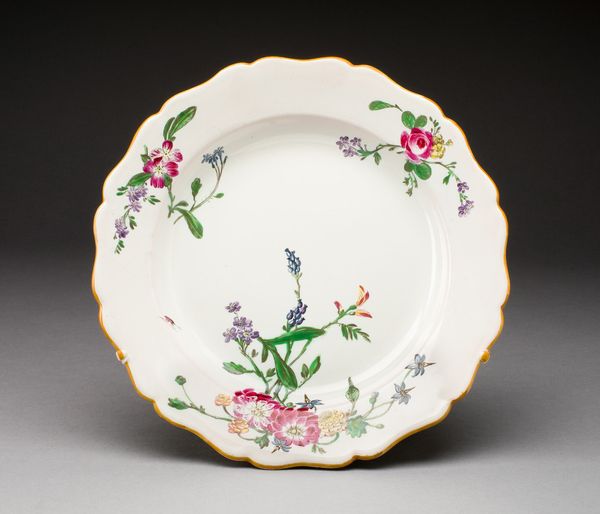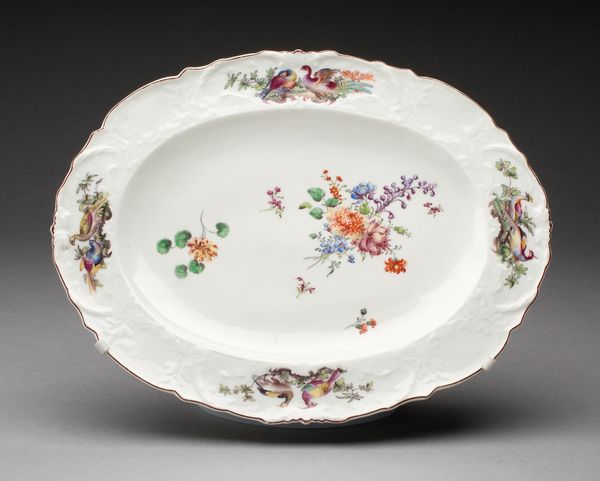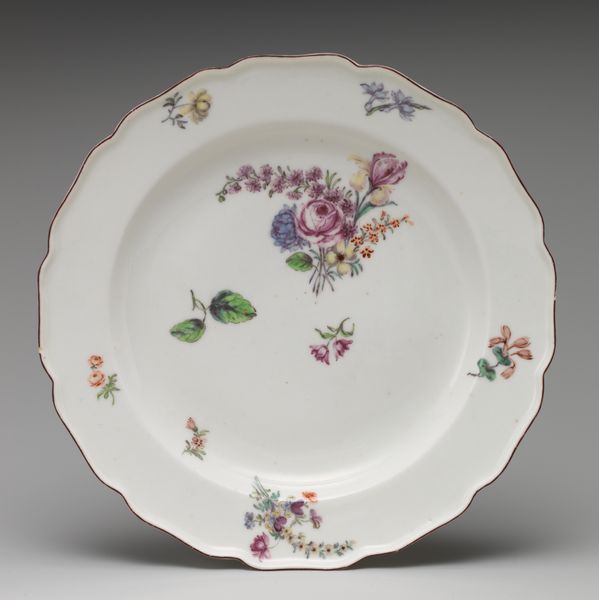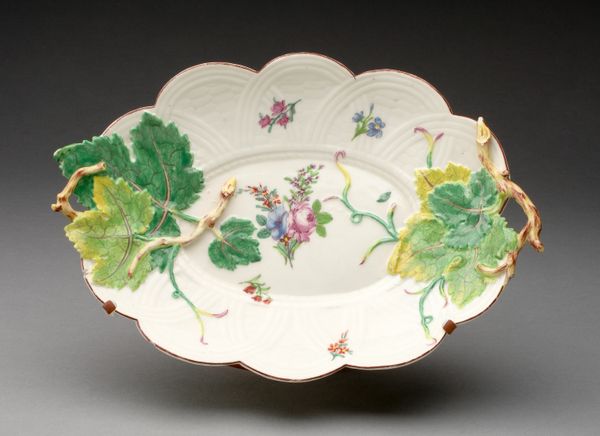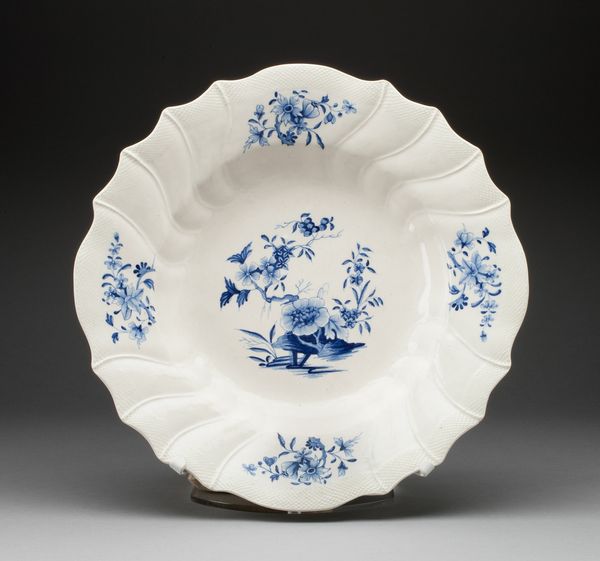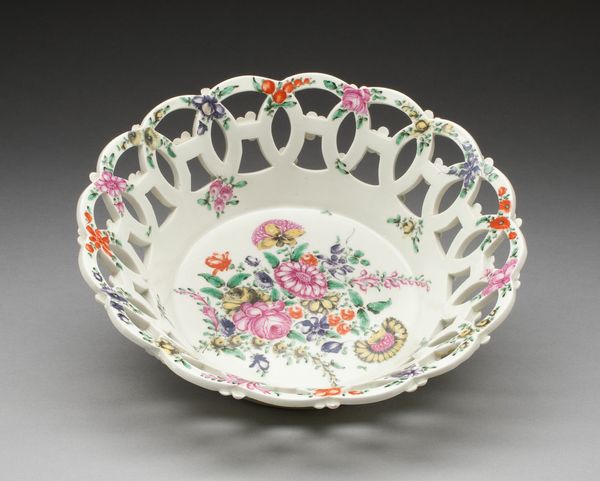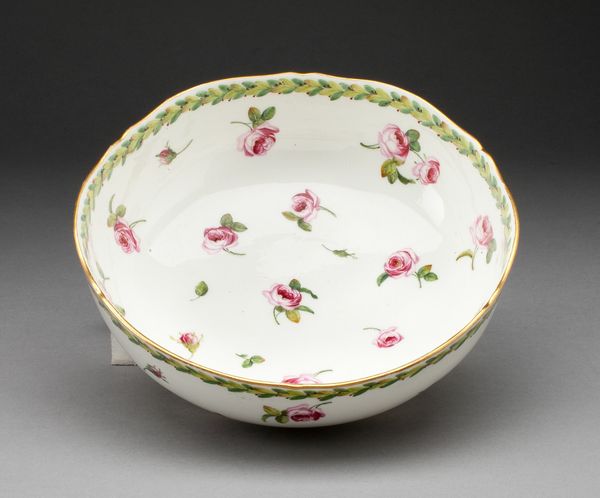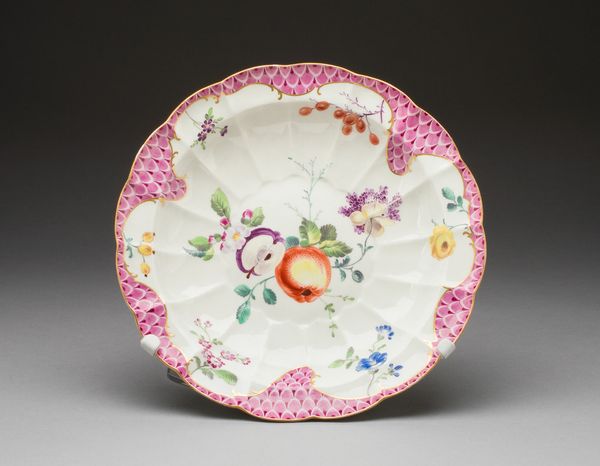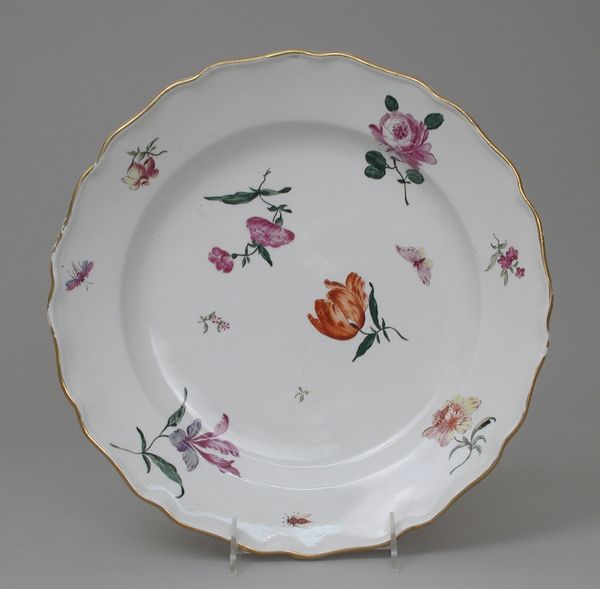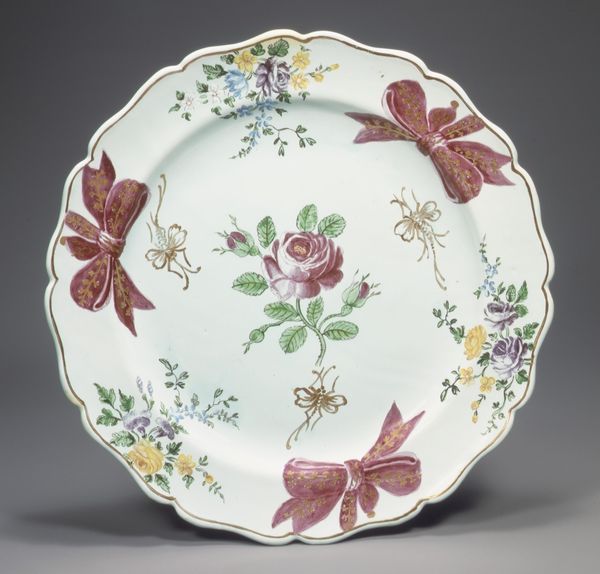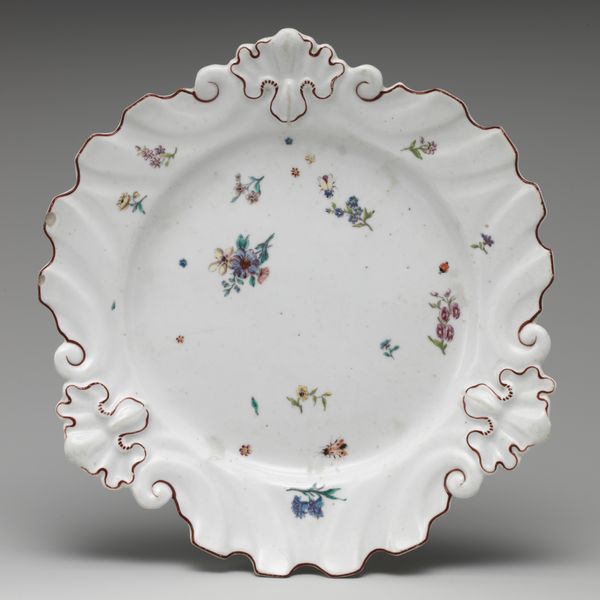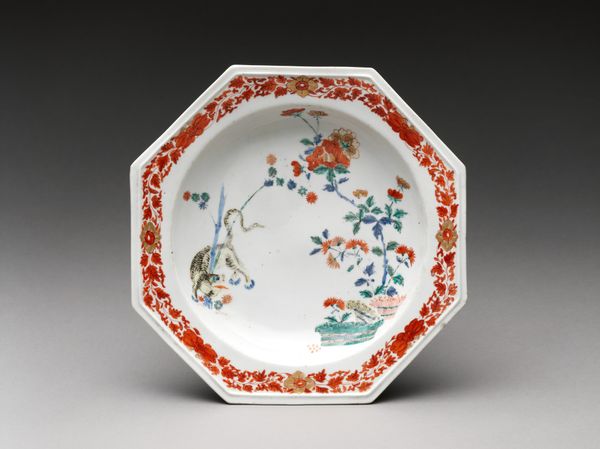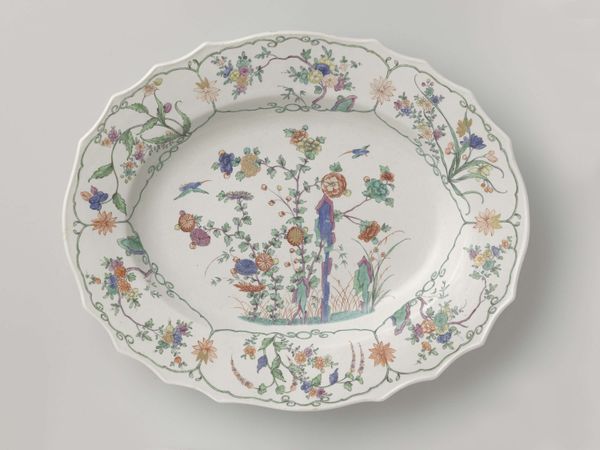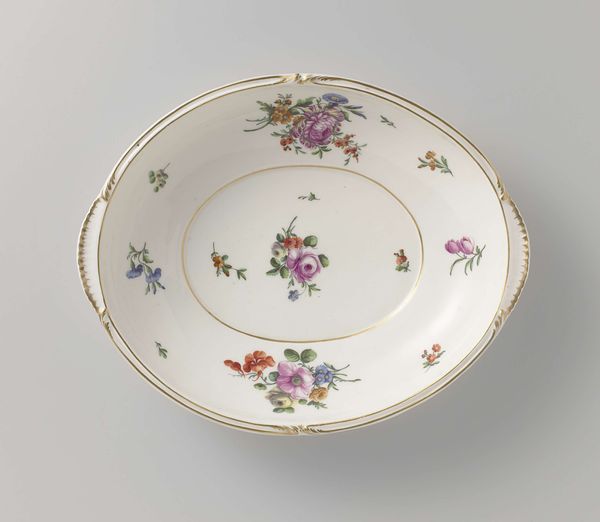
ceramic, porcelain
#
ceramic
#
porcelain
#
ceramic
#
decorative-art
Dimensions: 8 3/4 x 8 3/4 in. (22.23 x 22.23 cm)
Copyright: Public Domain
Curator: Here we have a selection of porcelain tableware produced by Wedgwood, circa 1800, including what is labeled as a "Dessert Plate". Editor: The colour scheme strikes me first. That delicate green against the stark white, so clean, so pastoral. It evokes a sense of refined gentility, almost an imagined Arcadia on the table. Curator: Yes, Wedgwood certainly cultivated an image of classical taste. He mastered techniques for mass production, allowing for wider access to such pieces while retaining an aura of exclusivity. These were not merely functional items; they signaled status and sophistication. Notice the porcelain body itself. Refined clay mixtures and precise firing schedules were part of a total commitment to producing objects for an emerging market for affordable luxury. Editor: Looking closer at the painted designs, the recurring sprigs and vegetal motifs remind me of enduring themes like rebirth, growth and natural abundance. Are they specific plant types, or more generic symbols? The repetition across each item—soup tureen to small plate—speaks to a conscious orchestration of meaning, setting the scene for certain narratives in a social event. Curator: While not botanically exact, I believe those stylized leaves allude to fashionable oriental designs and landscape painting. Wedgwood expertly capitalized on this craze through printed images sourced in books on art and the natural world. The forms too, those gentle curves of the edges—how do they correspond with or distinguish from Chinese porcelains, also prized at the time? It suggests production informed by complex historical and economic connections. Editor: Precisely. It shows cultural exchanges, desires for exotica, and a burgeoning visual vocabulary that we take for granted today. And I cannot ignore this quiet simplicity. It evokes more complex issues through subtle visual communication. The green isn’t just decoration but perhaps a reference to natural order, or social order… the controlled "nature" displayed in this period’s landscaping. Curator: So, both a demonstration of technical process of production alongside visual storytelling then. That resonates deeply with understanding how these objects circulated within the economy of daily life. Editor: Yes, seeing this makes me appreciate the long history of imagery that informs contemporary patterns to this day. Thanks!
Comments
No comments
Be the first to comment and join the conversation on the ultimate creative platform.
